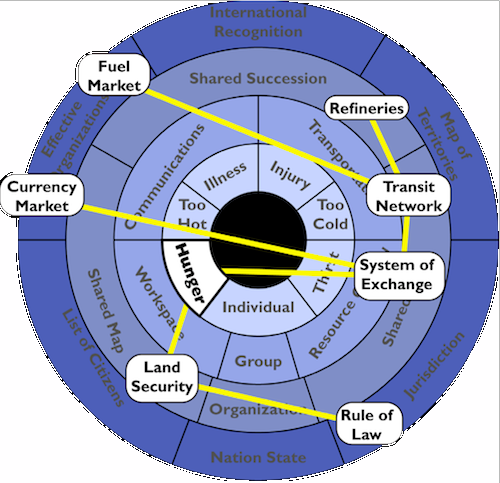System Failure
I was looking for more general insights into the topic on why systems fail. I stumbled on a talk of Eleanor Saitta from last years Chaos Communication Congress in Berlin. There is a recording of the talk here and the slides for the talk can be obtained here.
I am going to summarize some of the key points Saitta made in her talk in this article.
Types of System Failures
There are two general types of system failures: Simple and chained failures.
The systems propensity for failure is related to the complexity of the system and affected by the aspiration to increase efficiency, optimality and accelerate the Prozesses weithin the system.
Example of the Determinants of System Collapse
In many cases, system complexity is very overwhelming. So the task of analyzing why a system fails can be very demanding.To answer the specific question what kind of failure of the economic system (eg. the near-collapse of the financial system in 2008) leads to the death of one or more individuals, Saitta presents the system effect circle.
The individual is placed in its center, next come the possible causes of ones death, the essential foundations of society (like work, resources, transportation and communication). The last two circles show the underlining concepts to generate and sustain the former items.
Multiple systems are affected by those concepts, the following example should clarify the logic.In Figure 2 Saitta shows the connections between the individual systems and how they affect each other.

Preventing Collapse
To prevent collapse systems have to be designed to be resilient. The graphic shown in the example above can be used as a basis for the analysis of “what can go wrong”. These results can be generated by defining the Need-Matrix (Figure 3) for the system in focus.
A system not only consists of the foundation factors found in the Need-Matrix, but also the assets and actors within the system, and the rules which control the the access from the actors on the resources.
The goal for building resilient systems is therefore to analyze the connections between actors and assets and explore how the rules have to be designed for the system to work effectively.
Conclusion
Building resilient systems is hard on every level. On a large scale (eg. banking system) existing power distributions often prohibits the establishment of a resilient infrastructure. Nonetheless an in-depth analysis might help prevent the most severe consequences.
For smaller scale systems, like a supply chain, analyzing the foundational factors, actors, assets and rules is mandatory for building a resilient system.
The key concepts are the same on every level: actors, assets, their connections and access rules.
Update:
You can find more on the Simple Critical Infrastructure Model on these slides by Vinay Gupta.










Add new comment